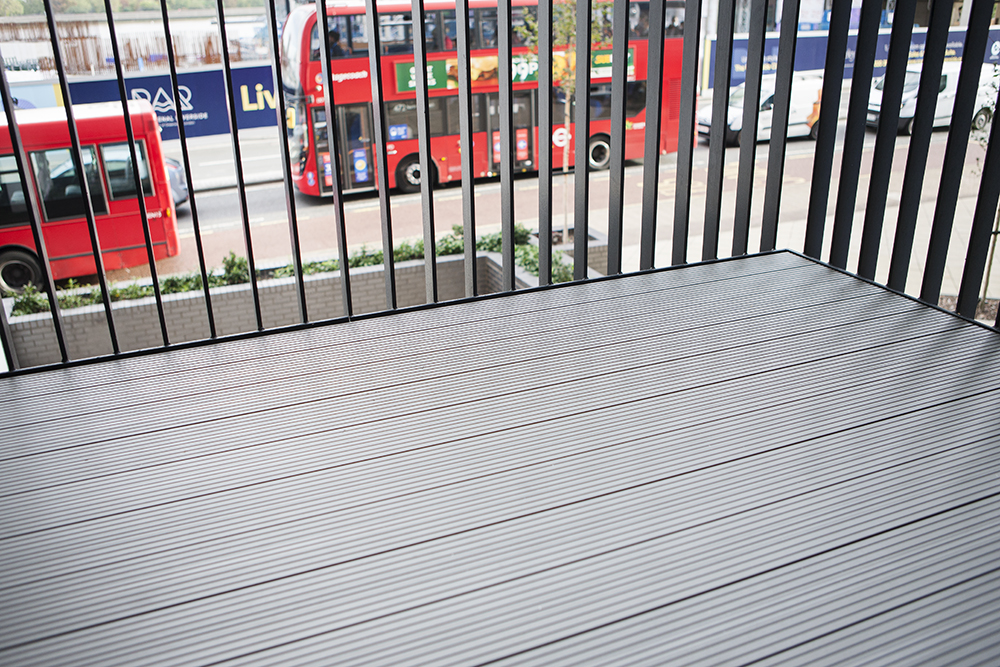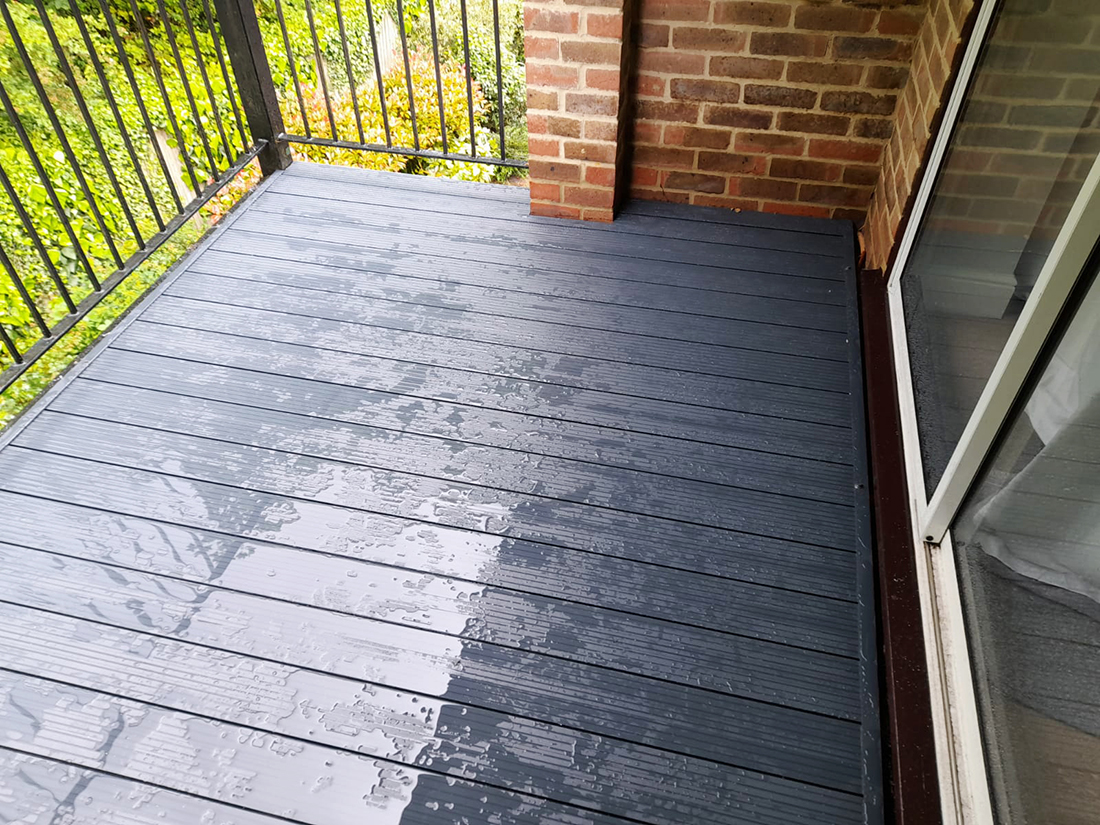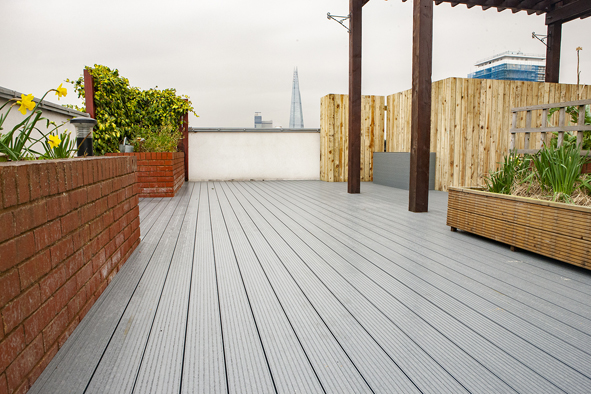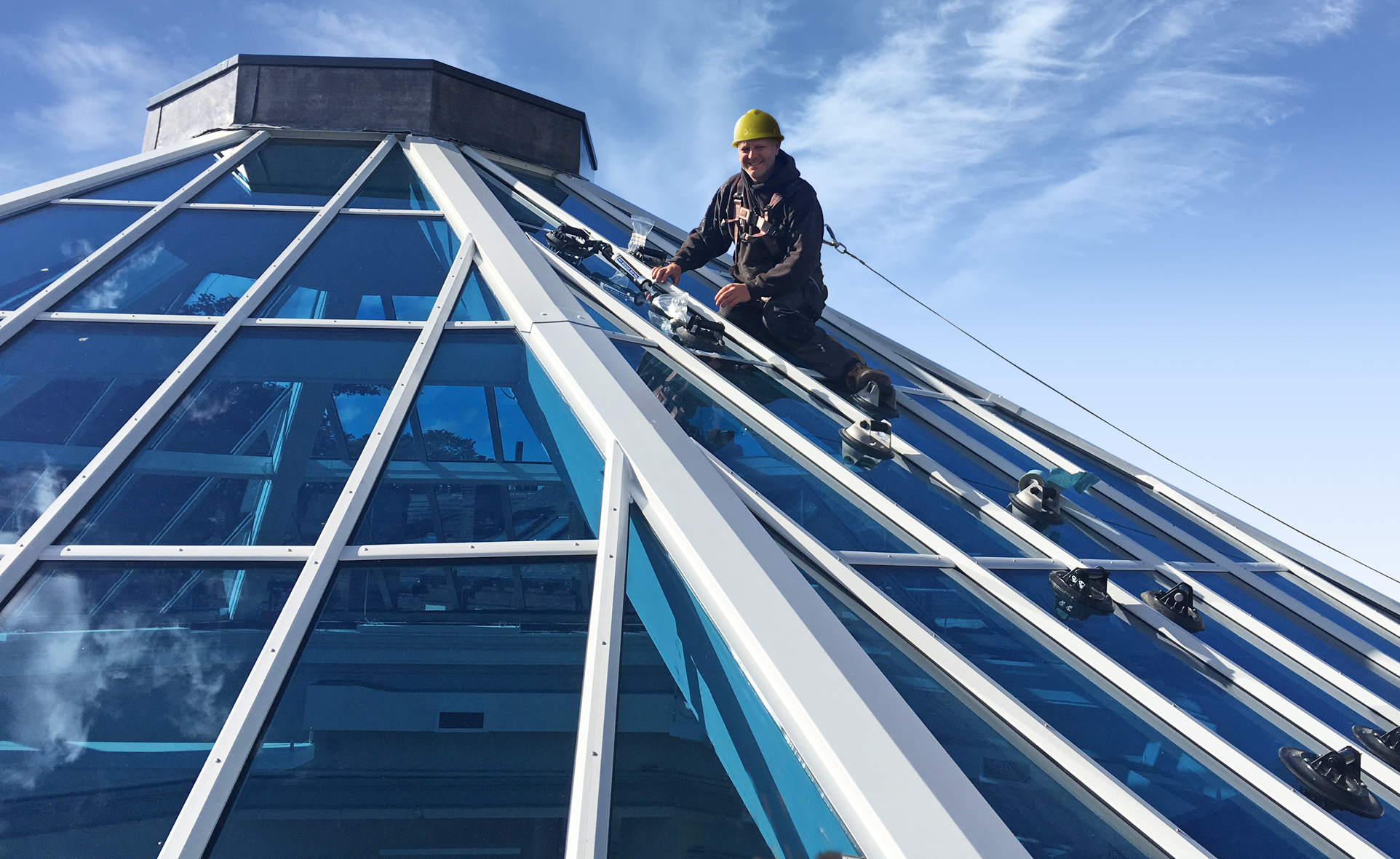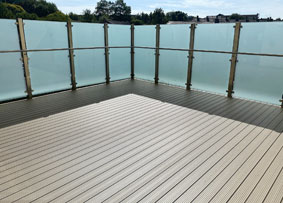Aluminium has been increasingly recognised as a viable material for construction products over recent years. We spoke with Richard Izzard, manging director of AliDeck, about a recent major roof terrace refurbishment project for Hyde Housing.
With concerns over fire-safety in external wall systems shifting industry towards non-combustible solutions, the benefits of extruded aluminium profiles, such as decking or cladding boards, have answered many of these new challenges.
The benefits of using aluminium products in new-build construction go beyond simple compliance with regulations, though. Its lightweight, cost-effectiveness, striking aesthetics, sustainability and versatility are all key contributing factors to aluminium’s uptake. These benefits, of course, apply for the retrofit and remediation market and aluminium building products are routinely now sought by specifiers in the housing sector.
